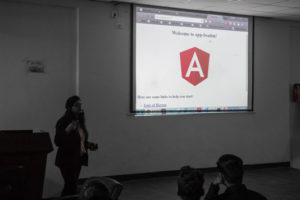
Continuous deployment with the automation- DEVOPS
The software engineering today has made a lot of automation for the faster and easy deployment of the software generated. The DevOps is the domain that combines the functioning of Development + the Operations. It is a software development domain that deals with the agile type of relationship between the development and the IT operations. The main aim of this type of automation is to improve the overall relationship between the two
different business units by enhancing the communication and the collaboration of these units.
The generic software development life cycle suggests the Enterprises work as a team for each phase of the lifecycle. These development teams work as an individual entities managing and processing the information by itself within the enterprise. The operational team whereas needs better communication and collaboration for better provide needs of the organization.
The DevOps culture brought together all the teams involved in the software development phases. This ensures the organization achieving shorter development cycles, increased deployment frequencies, properly aligned efforts for the business objectives. The DevOps has the goal to deploy features into production quickly and to detect and correct the problems when they are occurring without disrupting other services.
The DevOps is not based on the rigid methods of software development that includes sequential development phases. It is a new approach to the traditional application lifecycle management (ALM) process.The DevOps tools are being designed with the help of different stages working in correlation with others. The tool works with following stages: Plan, Build, continuous integration, deploy, operate, and continuous feedback.
The Plan is to make a collaboration of the vision and design of the software. The Build phase of the application deals with providing the environment for the development process. The third phase that is the continuous integration phase deals with the continuous merging of the content from the repository of the code so that the problems could be detected and fixed at the earlier stages. The Deploy stage is working on a final release of the information for the further processing of the data. The stage leads to the automated deployment of them in one place. The next stage deals with the operations needed for the monitoring two things: server monitoring and application performance monitoring. The last stage acts as the continuous improvements with the help of continuous feedback from the previous errors and mistakes.
The DevOps tool is categorized in the following categories:
Version control: This means numbering versions, as well as tracking the different configuration and any dependencies that are present in relation to other objects, such as the type, brand, and version of the database.
Build and deploy: Tools to facilitate the automated building and deployment of software throughout the DevOps process.
Functional and non-functional testing: Tools that help automated testing for fixing the different errors at different stages of the software lifecycle. Testing tools should provide integrated unit, performance, and security testing services.
Provisioning and change management: Tools to provision the platforms needed for deployment of the software, as well as monitor and log any changes occurring to the configuration, the data, or the software. To summarize the DevOps concept it would be better to just say unwinding the complexity of the process of the software development to ease the user and designer.



